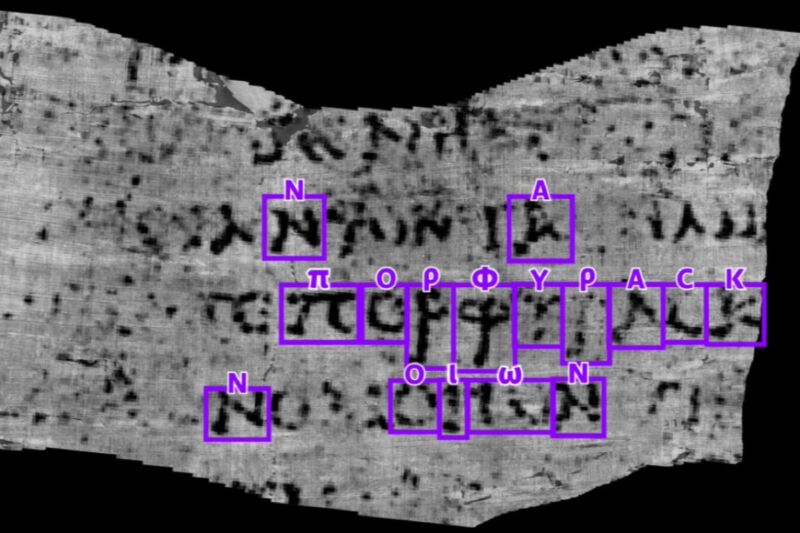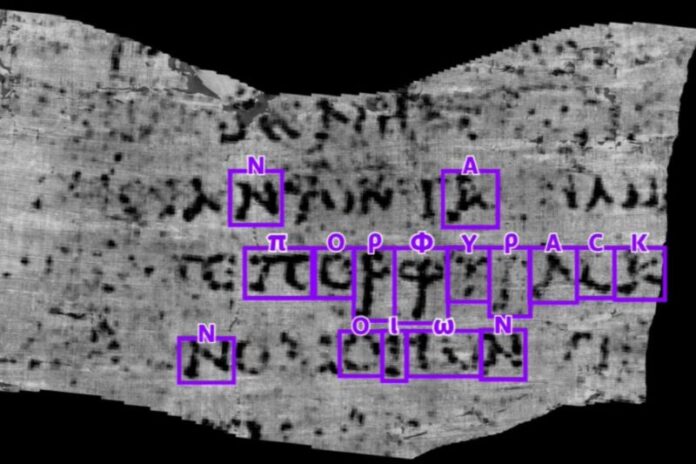
Enlarge / The first words have been deciphered on a charred ancient scroll: "πορφυρας" which means "purple dye" or "cloths of purple." (credit: Vesuvius Challenge/University of Kentucky)
Hundreds of badly charred ancient Roman scrolls found in a Roman villa have long been believed to be unreadable, but a 21-year-old computer science student at the University of Nebraska-Lincoln has successfully read the first text hidden within one of the rolled-up scrolls using a machine learning model. The achievement snagged Luke Farritor a $40,000 First Letters prize from the Vesuvius Challenge, a collaboration between private entrepreneurs and academics offering a series of rewards for milestones in deciphering the scrolls.
A second contestant, Youssef Nader, received a smaller $10,000 First Ink prize for essentially being the second person to decipher letters in a scroll. The main prize of $700,000 will be awarded to the first person to read four or more passages from one of the scrolls by December 31, and the founders are optimistic that this goal is achievable in light of these most recent breakthroughs.
As previously reported, the ancient Roman resort town Pompeii wasn't the only city destroyed in the catastrophic 79 AD eruption of Mount Vesuvius. Several other cities in the area, including the wealthy enclave of Herculaneum, were fried by clouds of hot gas called pyroclastic pulses and flows. But still, some remnants of Roman wealth survived. One palatial residence in Herculaneum—believed to have once belonged to a man named Piso —contained hundreds of priceless written scrolls made from papyrus, singed into carbon by volcanic gas.
Read 11 remaining paragraphs | Comments
Ars Technica - All contentContinue reading/original-link]




